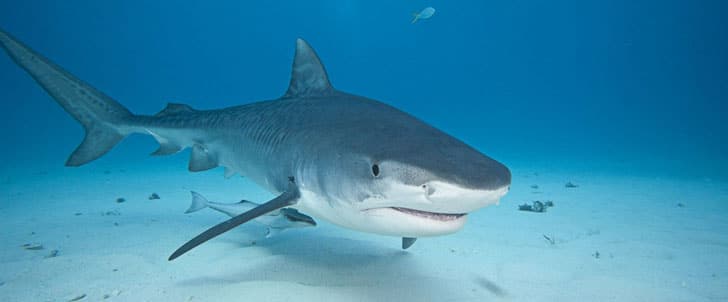Since the Nautilus, the first American nuclear submarine built in 1954 and entered service in 1955, the world of submarines has not undergone radical changes, as has been the case with combat aircraft, helicopters and even armored vehicles.
This is perhaps the case today with the SMX31 concept presented by Naval Group during the Euronaval 2018 Show. More than just a concentrate of innovations, the French concept opens up new perspectives for the use of attack submarines to ensure the naval power of a country.
A synthesis of naval innovation
What is striking, at first glance, with the SMX31 is the absence of a kiosk, this superstructure which emerges when the submarine is on the surface, and which contains the masts and the periscope. This gives the model a pure, very hydrodynamic shape, resembling that of a sperm whale, as Naval Group points out.
The French design offices then replaced the submarine's anechoic coating, a kind of rubber covering the hull of the ship to reduce sound emissions, with an arrangement of active tiles equipped with sensors. In any case, these “scales” can generate, depending on their orientation, micro-vortices very significantly improving the sliding of the submarine, therefore reducing its energy needs, like the skin of sharks. Likewise, the integration of sensors would transform the entire external surface of the submarine into an immense acoustic, and probably electromagnetic, detector. Again, this is reminiscent of the lateral line of fish, which informs the animal of even a slight variation in pressure over its entire length, and the ampullae of Lorenzini, electromagnetic detectors located in the nose. sharks and rays, allowing the predator to detect its prey in the dark and under cover. We can also wonder to what extent Naval Group did not get closer to marine biologists to imagine the SMX31, as the similarities with the aquatic world are so striking.

But an attack submarine is above all a combat weapon, and the SMX31 is also particularly well equipped from this point of view. According to Naval Group, it would be capable of implementing no less than 46 different weapons, from cruise missiles to acoustic torpedoes and underwater mines. The 3000 ton building is also sized to carry a lot of these weapons, especially since the crew is reduced to 15 people. In addition to the armaments, Naval Group has planned to carry numerous drones, whether underwater, surface or aerial, allowing the vessel to multiply by 10 its ocean surface controlled by a ship of this type compared to a submarine. -modern sailor, says the builder.
The submarine's energy is provided by lithium-ion batteries charged by fuel cells, allowing the submersible to remain submerged for 40 days at 6 knots patrol speed, again impressive figures, since current AIP technologies allow in general to maintain a dive at 3 knots for 3 to 4 weeks. Finally, Naval Group has synthesized all of its research in HMI to reduce the crew to only 15 members, or half of a crew of submarines like the Swedish Gotland, although weighing only 1500 tons.
A potential “Game Changer”
Taken individually, these technological innovations would already represent significant advances in the design of attack submarines. But by synthesizing these innovations into a single new generation vessel, the SMX31 opens the way to new operating methods for the submarine fleets of tomorrow. Not only would the building be technologically very superior to what is done today, with a very large control zone, and tactical options that are currently inaccessible, but it would also have a cost price much cheaper than a sub- current conventional marine, between 30 and 40% cheaper, according to achievable projections. In fact, the crew represents on average, over 30 years, 40 to 50% of the costs of owning a submersible, provided that it operates with a double crew, as in France. By reducing the crew by half, 20 to 25% savings over 30 years are made with the SMX31. Added to this is the ability to control a much larger area, therefore reducing the need for submarines at sea at the same time.

In fact, doing much better for much less cost allows a navy to very significantly extend its capabilities to act at a constant envelope. This is also the very definition of a Game Changer. A single vessel of this type per French overseas zone, where the Surveillance Frigates are deployed, would immeasurably strengthen the defensive naval power of each of these regions, and would extend without comparison the detection capabilities already in place, while the human cost appears almost negligible, since the 5 double-crewed overseas zones would therefore only represent 150 sailors, or a frigate crew.
Ordering and financing a demonstrator, is it possible?
However, for the moment, the SMX31 only exists in digital form. However, as we know, to convince a potential international client, it is much preferable to show the building in use. In addition, the multiple technological advances announced must be made reliable before they can be integrated into an operational building.
For this, it would be necessary to build a demonstrator, like the demonstrator Rafale in his time, or the Neuron a few years ago. The building thus designed would serve both as a development platform for the French Navy and as a showcase for foreign navies, potential customers of an operational version.
The financing of such a project can be envisaged in two ways, with the exception of a very hypothetical development using industrial funds, which appears very improbable today. The French State could play its role as shareholder, and finance the development of the demonstrator, with the participation of Thales, also a shareholder of Naval Group, and Dassault, itself a shareholder of Thales. For France, it would be a question of giving the submarine industry a head start on international competition in the next 20 years, which is far from negligible with the arrival of Chinese submarines, South Koreans and Japanese on this market, and the return of the Russians with efficient and inexpensive submarines. Let us not forget that, for the State, an investment of this type generates a budgetary return of 75% over 2 years. Thus, if the State financed 75% of the demonstrator, leaving shareholders responsible for the remaining 25% to be used on future exports, the operation would be, so to speak, neutral for public finances in the short term, and positive in the long term. middle term.

The second approach would be based on a European solution, either through multilateral cooperation between states like the NEURON program, or via permanent structured European cooperation, PESCO. The obvious advantage would be to reduce national investment needs, but Naval Group's competitors today are above all European: the Germans from TKMS, the Swedes from Kockum and, to a lesser extent, the Spaniards from Navantia. Such an approach can therefore only be considered within the framework of a European consolidation of the submarine sector, and more generally of the naval defense sector. Here again, it could be an attractive program making it possible to overcome existing antagonisms, particularly between French and Germans. Remember that several European Navies are currently in consultation to replace or expand their submarine fleets, such as the Netherlands or Poland. A project like the SMX 31, as long as France agrees to order a few copies too, and the design and construction timetable is short enough, would have no trouble bringing together 2, 3 or even 4 European countries to make it a major European program.
Finally, France could offer partnership to an emerging country, like India, with the difficulties we are experiencing. The Russians broke their teeth there with the Su-57, and the French with the Rafale for the MMRCA program. Furthermore, far from consolidating the French naval industry on an international scale, this model would only lead to the probable emergence of a new player on the international market, like what South Korea did. with the German Type 209 and Type 212 submarines, to be able, today, to offer its own AIP submersibles on the Asian market.
Conclusion
In any case, realistic approaches exist to undertake the creation of an SMX31 technological demonstrator. As such, the proximity in the national ecosystem between aeronautical companies and Naval Group would allow a transfer of skills concerning the very management of such a program, whether or not it is European. While commercial and technological competition is strengthening every day in the Defense industry, maintaining and extending a strong technological ascendancy remains one of the keys to guaranteeing the sustainability of the French sector, and consequently, of national strategic autonomy. Projects like the SMX31 do not appear frequently in the Defense industry, it is therefore essential to focus energetically on its exploitation and its realization.
